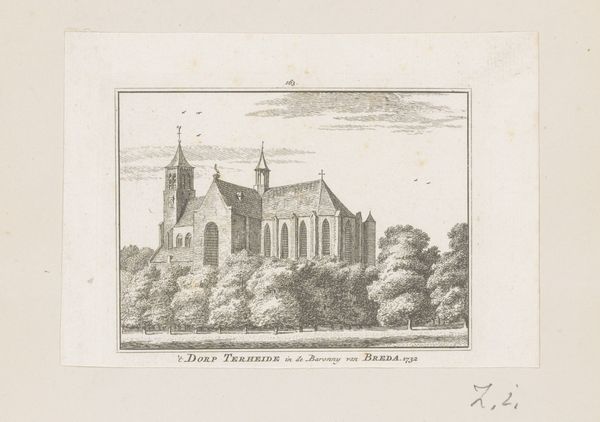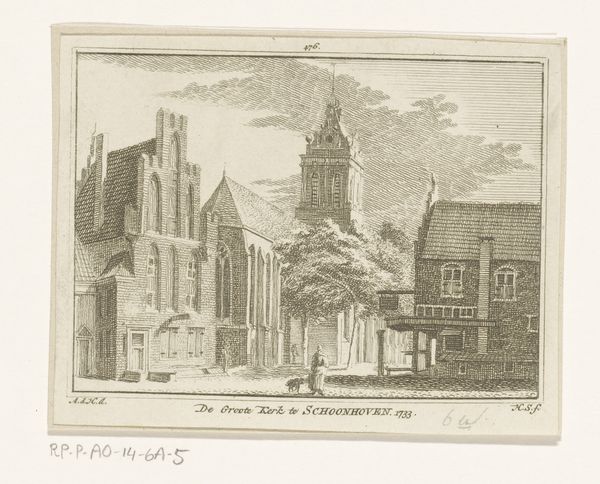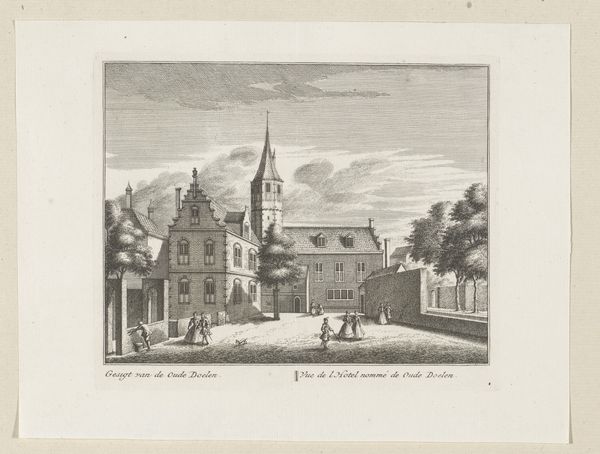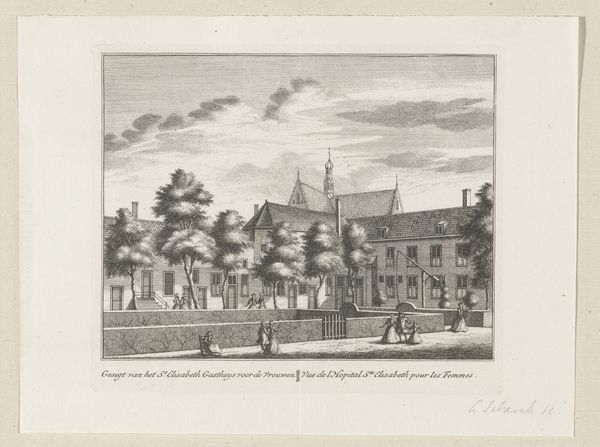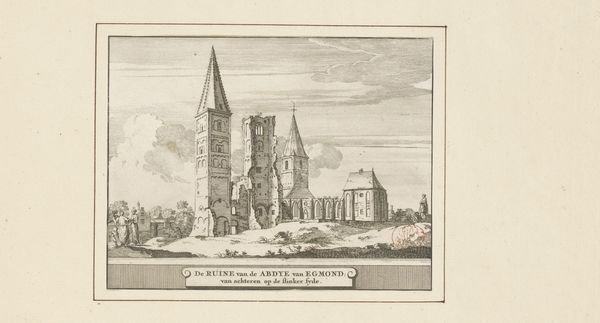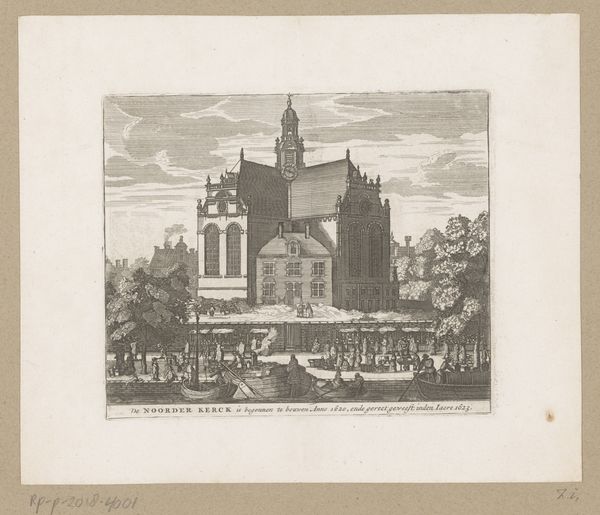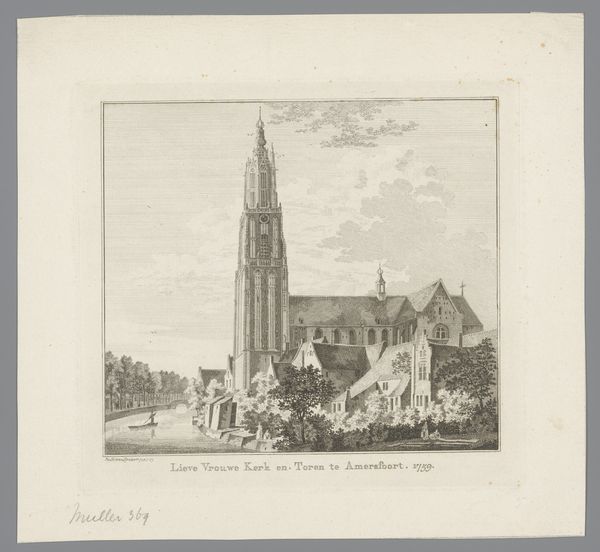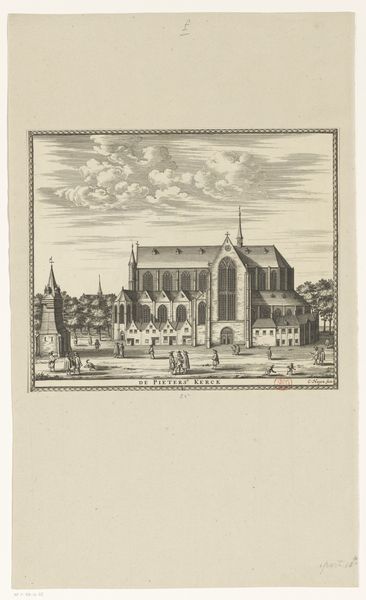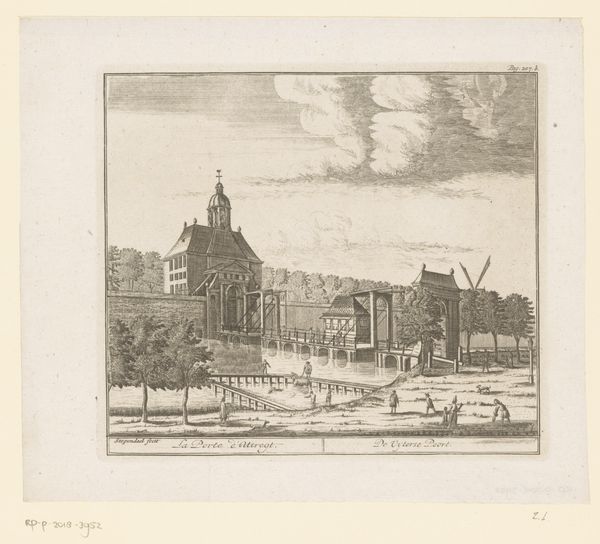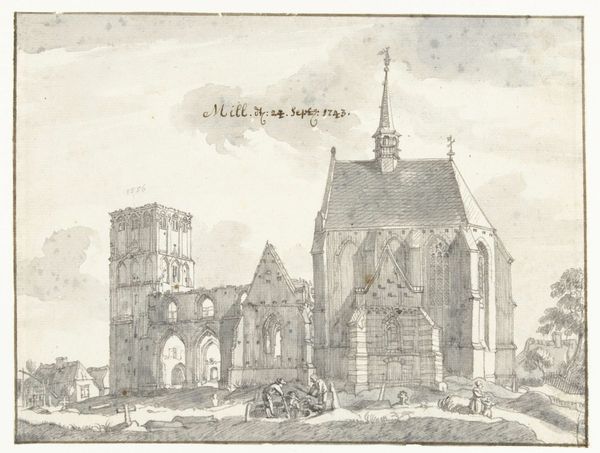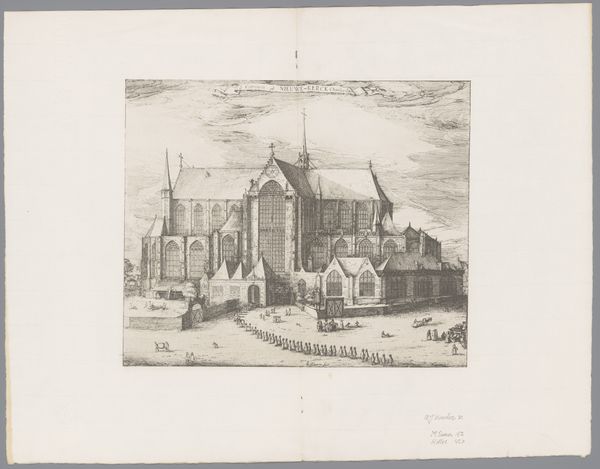
#
pencil drawn
#
aged paper
#
light pencil work
#
pencil sketch
#
old engraving style
#
sketch book
#
personal sketchbook
#
old-timey
#
pen-ink sketch
#
sketchbook drawing
Dimensions: height 143 mm, width 209 mm
Copyright: Rijks Museum: Open Domain
Curator: Paulus van Liender’s sketch, "Ruïne van de abdij van Rijnsburg, 1756", created sometime between 1741 and 1797, offers a fascinating glimpse into a landscape marked by ruin and persistence. What strikes you initially? Editor: It’s ghostly. The stark lines and almost clinical rendering of the abbey ruins give the scene a sense of loss and maybe a hint of abandonment. It feels distant. Curator: The crumbling architecture against the still-standing church really highlights the shifting power dynamics of the time. Abbeys, once centres of influence, now decaying...while other establishments survive. Think of the Reformation's impact. Editor: The medium—probably pencil and ink, given the linear quality—adds to that feeling. It's very direct, unromantic. No painterly softness here. It’s like a record of a specific material reality. What would daily life have been like in this place? What building materials were easily available? Curator: Exactly. And if we examine how this was produced – possibly as part of a sketchbook or series of topographical studies – what was Van Liender's commission? Was he documenting change for the record, or perhaps appealing to some latent sympathy for lost histories and heritages? Editor: Or simply creating images for consumption. Prints like these helped standardize views and shape perceptions. What was consumed, and what lay beyond the sketch? Curator: It asks questions about visibility, and how spaces change and stay the same according to socio-political influences, and about what kind of viewership were such visual relics creating. Editor: Looking at it again, the paper itself adds a layer. It seems aged, almost brittle. Time's passage becomes another material element that shapes our experience of the artwork. This engraving doesn’t seem celebratory, exactly... Curator: No, not at all. It's a testament to shifts in the dominant ideology, perhaps even a muted lament for what has been lost materially and spiritually. Editor: And a potent reminder that nothing, even the most solid-seeming structure, is permanent. It's really thought-provoking to think about those social changes. Curator: Absolutely. It compels us to reflect on the enduring nature of cultural shifts and the selective remembering – and forgetting – that defines collective identity.
Comments
No comments
Be the first to comment and join the conversation on the ultimate creative platform.
